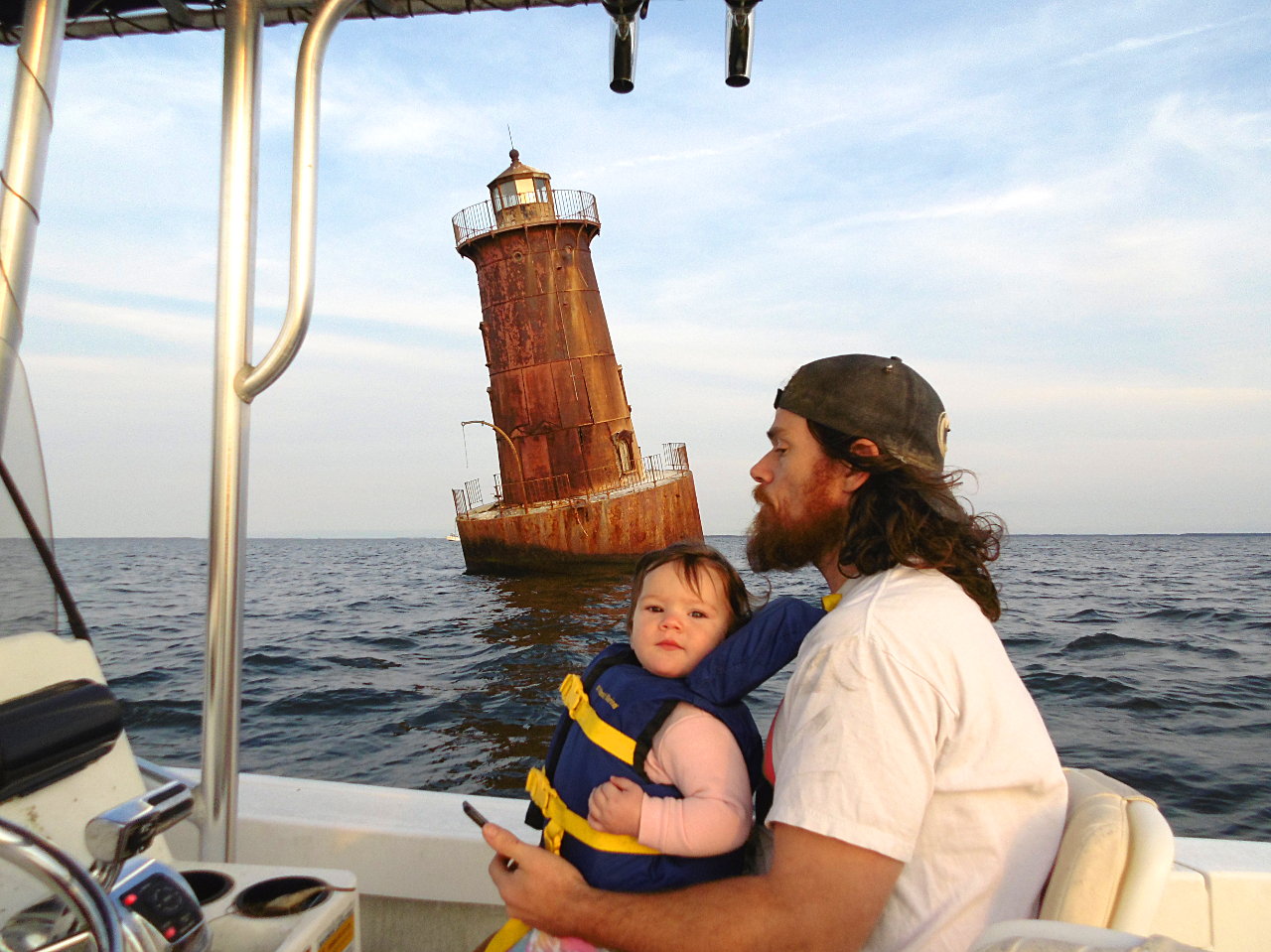 |
| Corwin and Gabby at the Sharp's Island Light |
Chesapeake Bay Mag,
Sharps Island Remembered: Tilghman Watermen’s Museum Reopens with New ExhibitThe only sign of Sharps Island today is a noticeably leaning, sparkplug-style lighthouse. It marks the shoals at the mouth of the Choptank River off Poplar Island and Black Walnut Point. It’s hard to imagine that the area near Sharps Island light was once an island up to 700-acres large, but some people in Tilghman still remember when there was some island left to see.
The Tilghman Watermen’s Museum, which records the lifestyle of watermen and the things they do, was founded by Hall and Mary Kellogg in 2008 because the couple saw the old Tilghman Island way of life disappearing.
This new exhibit is modeled on the museum’s Tilghman exhibits, which proved popular for their accounts of real people, with artifacts and using the memories of distinctive island residents. The museum’s approach is to give visitors “a history lesson with some stories thrown in,” says museum board member Bonnie Messick.
The Sharps Island exhibit covers Sharps history spanning from Captain John Smith’s exploration in 1608, when the island measured hundreds of acres, until its demise in the 1950s. The museum owes its early Sharps Island history to Smithsonian researcher Darrin Lowery, Ph.D., a “local kid made good,” as Messick tells us. Lowery has published work on the vanished Sharps Island in his study of coastal erosion through history. Lowery has a large collection of artifacts dating back thousands of years from Sharps, including arrowheads and pipes. Some items like those are part of the new exhibit.
Lowery published this overlaid map reflecting the drastic shrinking of Sharps Island from 1848 to 1952.
 |
| Map of the shrinking of Sharps Island |
The island’s role as a navigational aid is its longest-lasting legacy. There have been three Sharps Island Lights over the years, beginning with a portable light station built on the island itself in 1838. It had a wooden keeper’s quarters with a lantern built on top, according to Lighthousefriends.com. It was already obvious that erosion was quickly wearing the island down, and so in 1848 the portable lighthouse was moved farther inland. In 1866, a new screwpile lighthouse was built offshore, about four miles off Tilghman Island. It was no match for the heavy ice that formed multiple times over the next two decades, and the lighthouse was carried away entirely in February 1881. Amazingly, the keepers stayed on the lighthouse for 16 hours as it drifted five miles to another island.
In 1822, the third and final Sharps Island light was built. The cast-iron, concrete-filled caisson had a brick-lined, iron tower and Fresnel lens, along with a fog warning bell. This lighthouse proved sturdier, but it got its modern-day 15-degree tilt during the deep freeze of 1977. The three Sharps Island lighthouses were manned by lightkeepers until the final lighthouse was automated in 1951. The exhibit includes history of the light and its keepers, including a log shared by the daughter of the last lightkeeper.
The exhibit also covers the many owners of the island, which was primarily used for farmland. As the island was whittled down by the Bay, at least one owner tried to claim the historical 700 acres, now underwater, for oyster beds, to no avail.
There's often good fishing there, particularly on the the "ice breaker" a few hundred yards south. A pile of rocks initially set to break up ice drifting with the tide before it reached the tower, now submerged, but close enough to the surface to catch a lower unit on a low tide. It obviously didn't work.


No comments:
Post a Comment